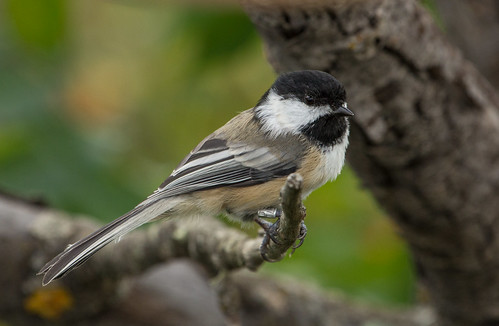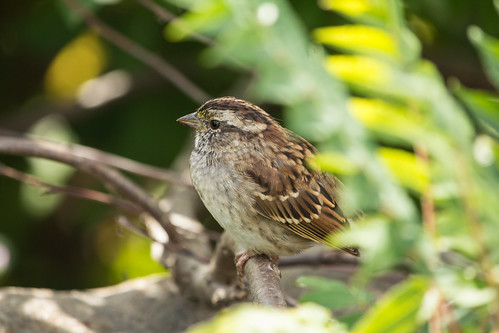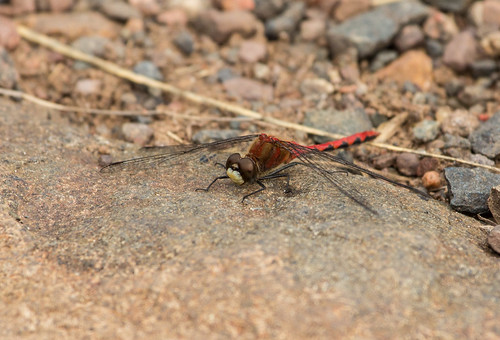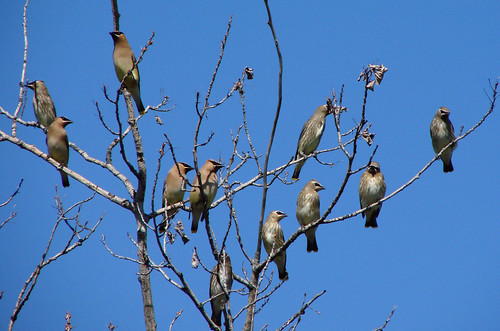 |
| Lisa and friends |
On September 2, I spent a couple of hours up at Hawk Ridge with my friend Lisa. I didn’t get up there this August, which was sad—I was especially frustrated to not be up there on August 26, when Frank Nicoletti caught and banded the very first Prairie Falcon at the Ridge. How thrilling that must have been!
I used to be the August counter and the occasional emergency auxiliary backup counter during other months at Hawk Ridge, back in the 80s and early 90s. Our protocol at the time was to focus entirely on raptors, so though we made cursory notes about songbirds and other birds passing through, we didn’t make a point of counting them, and our skills at the time weren’t refined enough to distinguish among most warbler species or even to differentiate most warblers from vireos or flycatchers as they flew overhead—they were all small passerines unless we caught sight of distinctive field marks or heard distinctive calls as individuals flew past. We did keep a count of non-raptors up at the Lakewood Pumping Station—we called that Dawn Dickey Duty—but again, although our team was about as skilled as any for that time, our skills were nowhere near as great as those of counters at many spots nowadays, and right now, Hawk Ridge may have the best counter anywhere. Karl Bardon manages to keep track of not just every raptor but every other bird, along with dragonflies.
The numbers get overwhelming, but on just the day I was there, Karl Bardon and Steve Kolbe counted 2,104 warblers, including 639 Nashvilles, 245 Tennessees, 263 Redstarts, and 928 that couldn’t be identified. He also counted 84 Canada Geese, a loon, 49 nighthawks, an Olive-sided Flycatcher and pewee, 3 kingbirds, a Philadelphia and a Blue-headed Vireo, 18 Red-eyed Vireos, 17 Blue Jays, 4 ravens, 2 Tree and 3 Barn Swallows, 6 Red-breasted Nuthatches, 7 Swainson’s Thrushes and 26 unidentifiable thrushes, 19 Chipping Sparrows, 30 Rose-breasted Grosbeaks, 43 Red-winged Blackbirds, 10 grackles, 31 Purple Finches, 1 House Finch, 14 Pine Siskins, and a goldfinch. He also tallied an appropriately solitary Solitary Sandpiper. The songbird migration was by far the heaviest first thing in the morning, long before we arrived in mid-afternoon.
Karl and Steve counted 552 Cedar Waxwings the day we were there. The movement of Cedar Waxwings in August and September every year is one of my favorite migration spectacles. In 1975, my first year of birding, Russ and I spent the week around Labor Day at his parents’ place in Port Wing, and everywhere waxwings were perched in trees, calling and sallying out to snap up insects. And it was the same every year, so that waxwings became entwined in my very concept of August and September.
Fun as it is to watch waxwings move about in flocks, counting them adds challenge to the joy. The groups of birds—both large and small—seem to swirl about as the birds shift positions within the flock. Fortunately, they’re moseyers who never seem to be in a hurry, so a flock is usually in view long enough to get an accurate count, and even when we have just a quick look or are dealing with a huge flock, we can usually get a reasonable estimate. My hearing is not as good as it once was, but I can still pick up their wavering, high-pitched calls, like tiny mice snoring, and it’s impossible to hear or see them without smiling.
I saw a few dozen waxwings on my pleasant afternoon at Hawk Ridge, along with two Osprey, several Bald Eagles, a couple of Sharp-shinned and Broad-winged Hawks, three or four kestrels, and two Merlins. A chickadee wearing a leg band posed for some nice photos, along with a few White-throated Sparrows. Dragonflies were flying—I got one nice photo of a white-faced meadowhawk. All in all, I could have done a lot worse than spend a September afternoon at Hawk Ridge.
 |
| Black-capped Chickadee |
 |
| White-throated Sparrow |
 |
| White-faced Meadowhawk |
